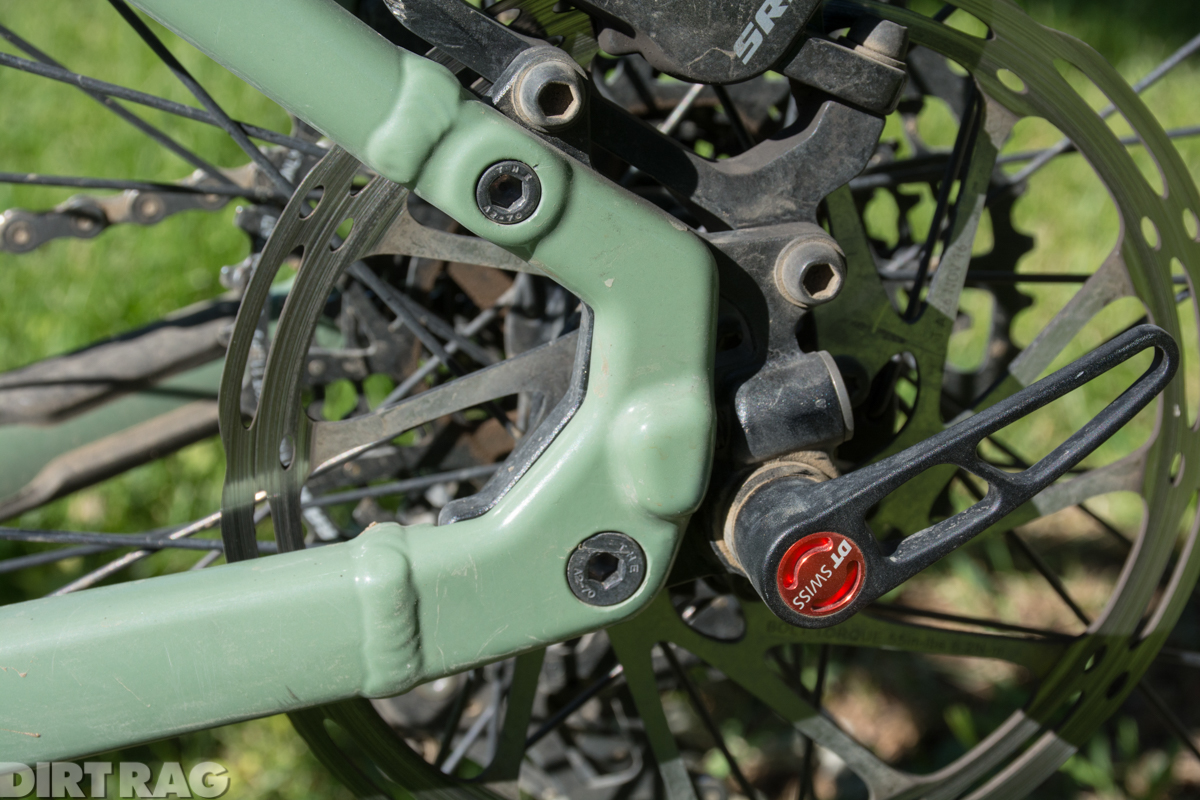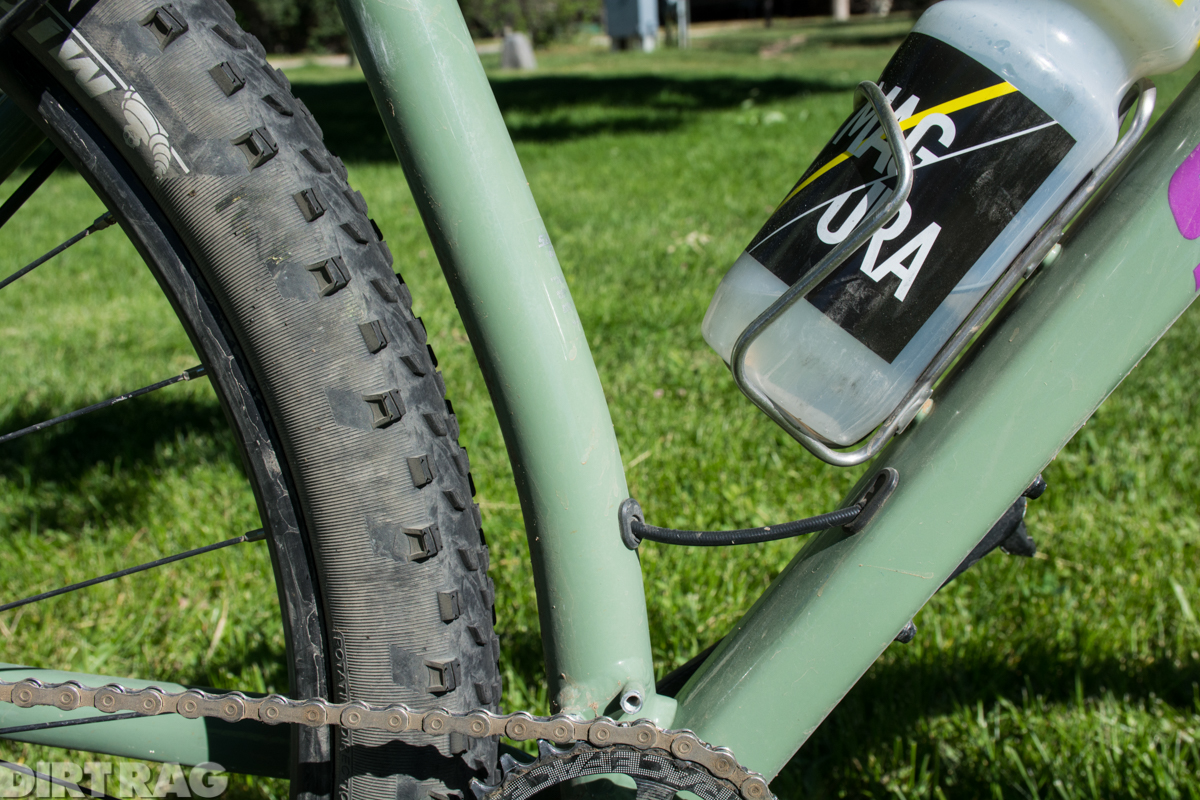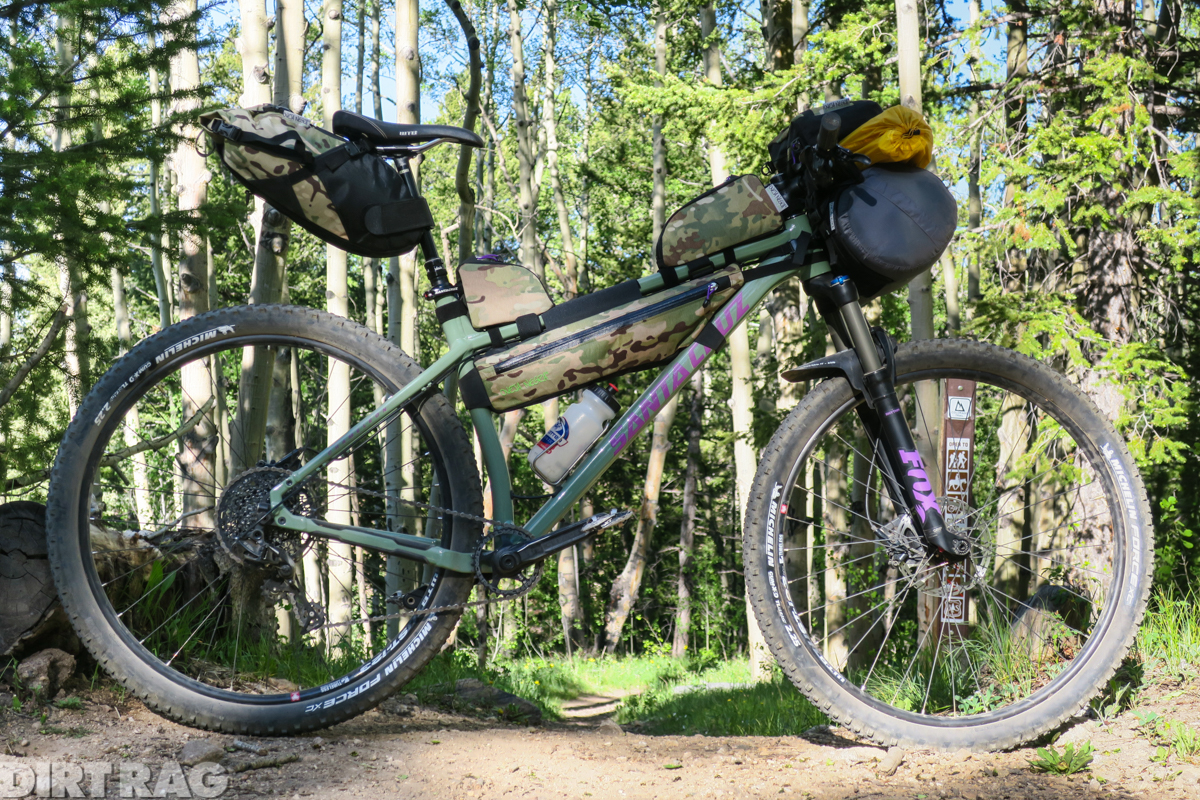Review: Santa Cruz Chameleon
Originally posted on September 29, 2017 at 1:12 amTester: Zach White
Age: 42
Weight: 200 lbs.
Height: 6’ 2”
Inseam: 32”
As the name suggests, Santa Cruz’s Chameleon has historically been a frame that’s adapted to various riding styles quite well. Over the years, I’ve seen them built up as dirt jumpers, singlespeed trail bikes, freeride hardtails, townies, and even straightforward trail bikes (GASP!). The updated 2017 version holds true to this tradition as it is now offered with 29er and 27plus wheels, has four different choices of swappable rear dropouts, and is compatible with a plethora of drivetrains (it’s so close to being belt drive compatible with the dropout design, but there isn’t a break in the frame). Angles and lengths are also updated to current Santa Cruz trail bike geometry standards, including Boost spacing and impressively roomy top tubes.

I had the chance to spend a couple of wet, sloppy days on the new Chameleon last month in England, which brings up an interesting marketing angle from Santa Cruz that we’ll get to in a minute. On a size large Chameleon set up as a 29er with a SRAM NX 1×11 drivetrain, and a 120 mm Fox Rhythm fork that the geometry chart is based around, we climbed up steep cobbled roads and bridleways laced between farms and fields to the tops of often steep, sloppy, loose and rooty descents that had me really wishing the stealth dropper posts the frame has routing for had shown up in time for this trip.
Climbing steep doubletrack and techy, twisty bits of trail highlighted how tight and responsive the Chameleon’s rear end is, thanks to short 415-430 mm stays on a 6000-series aluminum frame. While I’ll be the absolute first to admit Seb Kemp is a far better rider than I, watching him clean long, steep and wet rock garden climbs on softer-pressured 27.5×2.8 inch tires on his Chameleon while I walked alongside mine with 29×2.3s had me wondering if it were possible for mere mortals to make it a little farther up said climbs with more bite. Otherwise, the 29er setup felt great and didn’t offer any excuses for other soft spots in my riding abilities.With 27plus wheels, the maximum tire size is 3.0, and as a 29er it will fit up to 2.5 tires. Stock 1×11 gearing worked well, and leant itself nicely to not getting too clogged in English muck, but for those interested in broader gear ratios, the Chameleon is direct-mount front derailleur compatible.


Once the seat was dropped down with an Allen key, the Chameleon provided an agile feel, as it was almost as happy to manual as my 26-inch dirt jumper back home, and begged to be bounced around trials-style in urban settings. Descending on an aluminum hardtail without a dropper was interesting for someone like myself who is currently addicted to suspension bikes and disappearing saddles at the push of a button, but it didn’t take long to find the Chameleon’s rhythm, especially in the softer muck. That tight rear end was once again appreciated as it whipped through tight and steep switchbacks, and tucked under the rider nicely in a few really steep chutes and drops. Once things got rocky, or over miles of relentless cobbles and big, rough bridleway stepping stones, the Chameleon didn’t have any magic switch to soften trail feedback into the cockpit—at least in 29er mode. If this style of riding, or something similarly bumpy, was my norm, I’d opt for trying a set of 27plus wheels and tires at lower pressures on the Chameleon.
At the end of each ride, we spent a fair amount of time and English quarters (quarter pounders?) at the car wash cleaning a day’s worth of U.K. muck off the bikes. This is where an interesting marketing angle comes in from Santa Cruz, as they’re not just marketing the Chameleon as a well-sorted entry-level hardtail, but I think that owners of high-end Santa Cruz suspension bikes may be drawn to the Chameleon as a sort of winter bike. Starting at only $1,599 for a complete bike that’s void of pivot bearing maintenance, a drivetrain that’s a fraction of the cost of top-of-the-line options, and has modern geometry very akin to other trail bikes in their line, and considering how many riders of various tax brackets already likely to have a quiver of bikes, the not-exactly-original idea of a mud bike seems viable. Factor in how popular the brand of Santa Cruz is, i.e., the “matchy, matchy!” effect for current customers already running $10k+ bikes, and I think they’re onto something.


Regardless of marketing semantics, first impressions of Santa Cruz’s Chameleon are very positive, especially with its $1,599 to $1,999 price range. For riders like myself who can’t ride without dropper posts, it has internal routing that’ll easily allow installing a stealth style version as an upgrade. Setup choices are impressive, with singlespeed and geared dropout options in 142 and 148 mm spacing, respectively, two wheel size options that are interchangeable, and an abundance of drivetrain compatibilities. The Chameleon’s fit and feel made jumping back and forth from it to a Tallboy all but seamless, short of the whole suspension thing, of course. Not to beat a dead horse, but finding similarity like this between two bikes of entirely different price tags is definitely noteworthy, and points to the Chameleon’s well-sorted geometry. There wasn’t an opportunity to throw the new Chameleon on a scale, but it didn’t hint that it was portly or outstandingly light. Claimed weights should be released in the very near future, but weren’t available while writing this. All said, as an addition to a proper bike geek’s quiver, or as an entry-level bike, the new Chameleon seems like a great option.

Price: $1,999, frame only $749
Sizes: S, M, L (tested), XL
Check out more Santa Cruz bikes here.